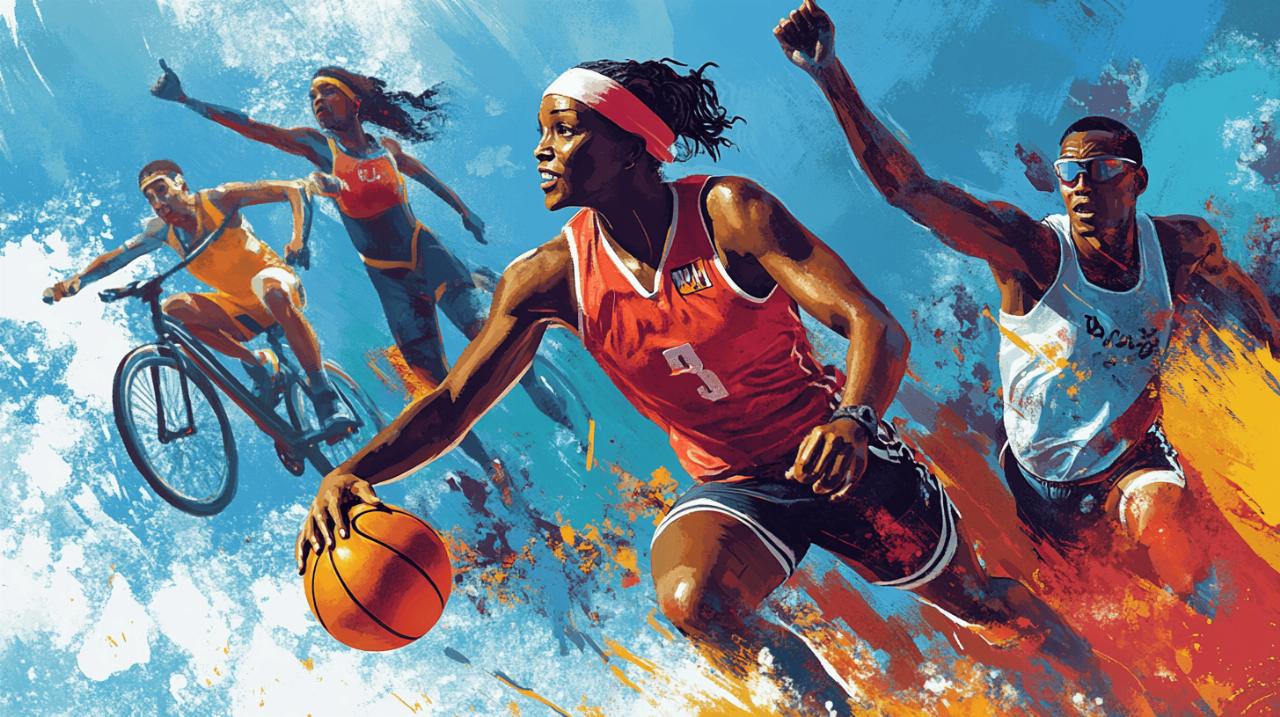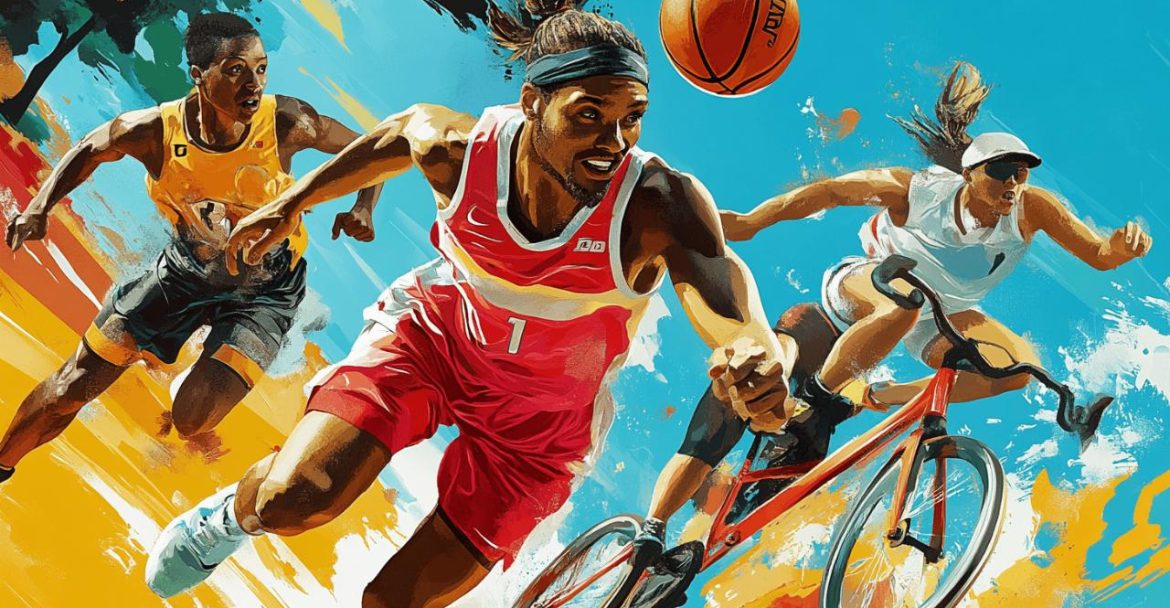Finding the right sports gear can significantly enhance your performance, prevent injuries, and make your sporting experience more enjoyable. Whether you're a seasoned athlete or just starting out, knowing how to select appropriate equipment tailored to your specific needs is essential. With numerous options available in today's market, making informed choices requires understanding various factors that influence gear selection. Let's explore how you can make smarter decisions when investing in sports equipment for your favourite activities.
Matching your gear to your specific sporting needs
Every sport has its unique requirements, and understanding these is the first step toward making informed equipment choices. Before purchasing any gear, consider what you'll be doing and how frequently you'll participate in the activity. Many sports enthusiasts waste money on unnecessary equipment that doesn't address their specific needs. For instance, running requires lightweight, breathable clothing and properly fitted shoes, while basketball players need loose-fitting apparel and high-top shoes for ankle support. Visiting https://www.clubdeportivosapporo.es/ can provide valuable insights into sport-specific equipment requirements, as they regularly feature articles on various sporting activities and gear selection.
Identifying essential equipment for different sports categories
Each sport category demands particular types of equipment. For cycling, tight-fitting jerseys and padded shorts reduce drag and enhance comfort during long rides. Swimmers benefit from suits designed to reduce water resistance, along with goggles and caps for optimal performance. Football players require breathable jerseys, appropriate shorts, cleats for grip, and shin guards for protection. Understanding these essentials prevents unnecessary purchases while ensuring you have what's truly needed for participation and protection.
Prioritising technical features based on skill level
Your skill level should influence your equipment choices. Beginners might not need advanced features that professionals require, while intermediates might benefit from gear that helps them progress. For example, novice runners might start with standard running shoes before investing in specialised ones with advanced cushioning or support features. As your skills improve, you can gradually upgrade your equipment to match your evolving needs and technique refinements.
Safety first: Protective equipment considerations
Safety should never be compromised when selecting sports gear. Protective equipment is crucial in preventing injuries and should be chosen with care. For impact sports like hockey or rugby, helmets, mouthguards, and padding are essential. Even seemingly low-risk activities like cycling require proper helmets to prevent serious head injuries. Modern protective gear incorporates innovative technology, such as helmets with sensors that can detect impact levels, providing additional safety measures for athletes.
Sport-specific safety standards to look for
When purchasing protective equipment, look for items that meet recognised safety standards for your particular sport. Different sporting bodies and organisations establish these standards to ensure equipment provides adequate protection. For instance, cycling helmets should have certifications from relevant safety authorities. Similarly, protective gear for contact sports should comply with regulations set by governing bodies. These standards serve as quality indicators and confirm that the equipment has undergone rigorous testing for safety and efficacy.
Balancing protection with mobility and comfort
While protection is paramount, it shouldn't come at the expense of mobility and comfort. Overly restrictive protective gear might discourage use or impair performance. Modern sports equipment manufacturers understand this balance and design protective gear that offers maximum safety while maintaining flexibility and comfort. Look for equipment that provides adequate protection without restricting movement or causing discomfort during extended use. This balance is especially important for sports requiring significant mobility, such as basketball or tennis.
Finding the perfect fit for optimal performance
The fit of your sports gear significantly impacts both performance and injury prevention. Ill-fitting equipment can cause discomfort, restrict movement, and even lead to injuries. For instance, running shoes that are too tight can cause blisters and foot problems, while those too loose might lead to ankle injuries. Similarly, sportswear that's too tight can restrict circulation and movement, while overly loose clothing might get caught in equipment or impede performance.
Measurement techniques for various gear types
Different types of sports equipment require specific measurement approaches. For footwear, measure your feet in the afternoon when they're at their largest, and wear the socks you'd typically use during your activity. For clothing, take accurate measurements of your chest, waist, hips, and inseam. When selecting helmets or headgear, measure the circumference of your head just above the eyebrows. Many manufacturers provide detailed sizing guides online, helping you convert these measurements into the appropriate size for their products.
Common sizing pitfalls to avoid when shopping online
Online shopping for sports gear presents unique challenges regarding sizing. Different brands often have varying size charts, making standardisation difficult. To avoid disappointment, always check the specific sizing guide for each brand rather than assuming your usual size will fit. Read customer reviews about sizing to see if items typically run large or small. Some online retailers offer virtual fitting tools or detailed product measurements to help with selection. When in doubt, consider ordering multiple sizes with the intention of returning those that don't fit properly, ensuring you've checked the return policy first.
Researching brands and quality indicators
Not all sports equipment is created equal, and brand reputation can be a valuable indicator of quality. Established brands often have years of research and development behind their products, resulting in better performance and durability. However, brand name alone shouldn't be the sole deciding factor. Some newer or less well-known companies produce excellent equipment at competitive prices. The key is to research thoroughly and look beyond marketing claims to make informed decisions.
Distinguishing between marketing claims and genuine quality
Sports equipment marketing often features impressive-sounding technology and claims about performance enhancement. While some innovations genuinely improve equipment functionality, others might be primarily marketing tools with minimal practical benefits. Focus on verifiable features like material quality, construction techniques, and objective performance metrics rather than buzzwords. Look for specific explanations of how certain features benefit performance rather than vague claims. Websites like Clubdeportivosapporo often provide objective analyses of sports equipment claims, helping consumers separate marketing hype from genuine innovation.
Interpreting user reviews effectively
Customer reviews provide valuable insights into real-world performance of sports equipment, but they require careful interpretation. Look for patterns in feedback rather than focusing on isolated opinions. Consider the reviewer's experience level, usage patterns, and physical characteristics when evaluating their assessment. Detailed reviews explaining specific aspects of performance, comfort, and durability are generally more helpful than vague praise or criticism. Be wary of reviews that seem overly promotional or overly negative without specific details, as these might not represent typical user experiences.
Material selection for varying weather conditions
 Environmental conditions significantly impact the performance of sports gear, making material selection crucial for comfort and functionality. Different activities in various climates require specific fabric properties to maintain comfort and performance. Understanding material characteristics helps you select gear appropriate for your specific sporting environment, whether you're exercising indoors or braving the elements outdoors.
Environmental conditions significantly impact the performance of sports gear, making material selection crucial for comfort and functionality. Different activities in various climates require specific fabric properties to maintain comfort and performance. Understanding material characteristics helps you select gear appropriate for your specific sporting environment, whether you're exercising indoors or braving the elements outdoors.
Breathable versus insulating fabrics: when to choose which
For warm-weather activities or high-intensity exercises that generate significant body heat, breathable, moisture-wicking fabrics are essential. These materials, typically made from synthetic fibres like polyester or nylon blends, draw sweat away from the body and allow air circulation, keeping you cooler and drier. For cold-weather activities, layering becomes important, with moisture-wicking base layers, insulating mid-layers, and protective outer layers. Modern insulating materials can provide warmth without excessive bulk, allowing freedom of movement while protecting against low temperatures.
Waterproofing, UV protection and other environmental considerations
Outdoor sports require additional material considerations beyond temperature regulation. For activities in rainy conditions, waterproof or water-resistant fabrics keep you dry and comfortable. Look for sealed seams and water-repellent treatments that prevent moisture penetration while maintaining breathability. For sunny environments, UV-protective fabrics shield your skin from harmful rays during extended outdoor sessions. Wind-resistant materials are valuable for cycling, running, or other activities where wind chill can impact performance and comfort. Consider the primary environmental challenges of your sport when selecting appropriate materials.
Assessing durability and long-term value
Quality sports equipment represents a significant investment, making durability an important consideration. While higher-quality gear might have a larger upfront cost, it often provides better value over time through extended usability and performance. Understanding how to assess durability helps you make cost-effective purchasing decisions that balance immediate budget constraints with long-term value.
Construction details that indicate lasting quality
Several construction elements indicate durable sports equipment. For clothing, examine stitching quality, with reinforced or double stitching at stress points suggesting better durability. For footwear, look at how the upper connects to the sole, with glued connections generally being less durable than sewn or bonded constructions. With hard equipment like rackets or bats, check for solid construction without weak points or excessive flexibility where rigidity is needed. Quality materials generally indicate better durability, though specific material choices should match your usage patterns and priorities.
Maintenance requirements and their impact on gear longevity
Even the highest-quality sports equipment requires proper maintenance to maintain performance and extend lifespan. Consider maintenance requirements when making purchasing decisions, as some high-performance gear might demand more care than you're willing to provide. Follow manufacturer cleaning and storage recommendations to preserve functionality and appearance. Regular inspection for wear and addressing minor issues before they worsen can significantly extend equipment life. Some gear might require professional maintenance, adding to the total cost of ownership but potentially providing better long-term value through extended usability.
Smart budgeting for sports equipment
Creating a realistic budget for sports equipment requires balancing quality needs with financial constraints. Setting spending priorities helps allocate your budget effectively across various equipment pieces. Remember that the most expensive option isn't always necessary, especially for beginners or recreational participants. However, certain items warrant higher investment due to their impact on safety, performance, or comfort.
Where to invest versus where to economise
Prioritise spending on items directly affecting safety and performance. For running, quality shoes warrant investment as they impact joint health and performance, while basic moisture-wicking shirts might suffice without premium brand prices. In cycling, helmets and properly fitted bikes deserve budget priority over accessories or premium apparel. For contact sports, never economise on protective equipment that prevents injuries. Consider your participation frequency and level when determining where to invest; occasional participants might need less specialised equipment than regular enthusiasts.
Timing purchases to maximise savings
Strategic timing can significantly reduce sports equipment costs without compromising quality. End-of-season sales offer substantial discounts as retailers clear inventory for upcoming models, making them ideal for purchasing current-season equipment. Black Friday, Cyber Monday, and other major shopping events typically feature significant sports equipment discounts. Some speciality retailers offer loyalty programmes or referral discounts that reward repeat customers. Consider buying previous-year models when new versions are released, as improvements are often incremental while price differences can be substantial. Subscription services for retailer emails can alert you to upcoming sales or special promotions.
Trial strategies before committing to purchase
Whenever possible, testing sports equipment before purchase provides valuable insights into fit, comfort, and performance that specifications alone cannot convey. This hands-on evaluation helps avoid costly mistakes and ensures your equipment meets your specific needs and preferences. Various testing options exist, from in-store trials to rental programmes, depending on the equipment type and retailer policies.
Making the most of in-store testing opportunities
When visiting physical stores, wear appropriate clothing for trying equipment and bring any accessories that might affect fit or performance. For footwear, walk, jog, or perform sport-specific movements to assess comfort and support. With rackets or clubs, practice your grip and swing motion to evaluate weight distribution and feel. Compare multiple options systematically, noting specific differences rather than general impressions. Don't rush the testing process; spend sufficient time with each option to make meaningful comparisons and assessments.
Understanding return policies and warranty coverage
For equipment that cannot be adequately tested before purchase, thoroughly understand return policies and warranty coverage. Different retailers offer varying return windows and conditions, with some allowing returns only for unused items and others permitting returns after light use. Extended warranties might provide value for expensive equipment subject to significant wear or mechanical issues. Keep all packaging and receipts until you're certain the equipment meets your needs and functions properly. Some manufacturers offer satisfaction guarantees beyond retailer return policies, providing additional purchase security for certain equipment categories.

